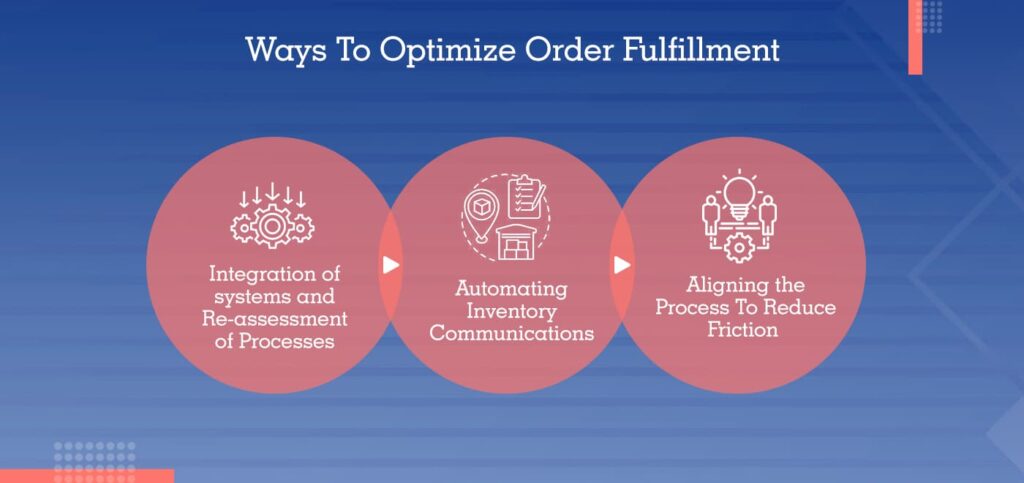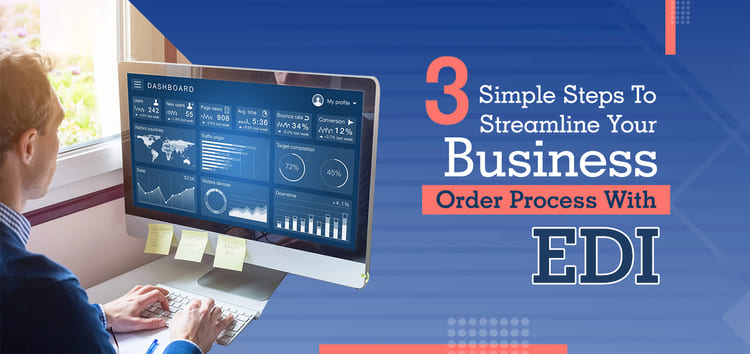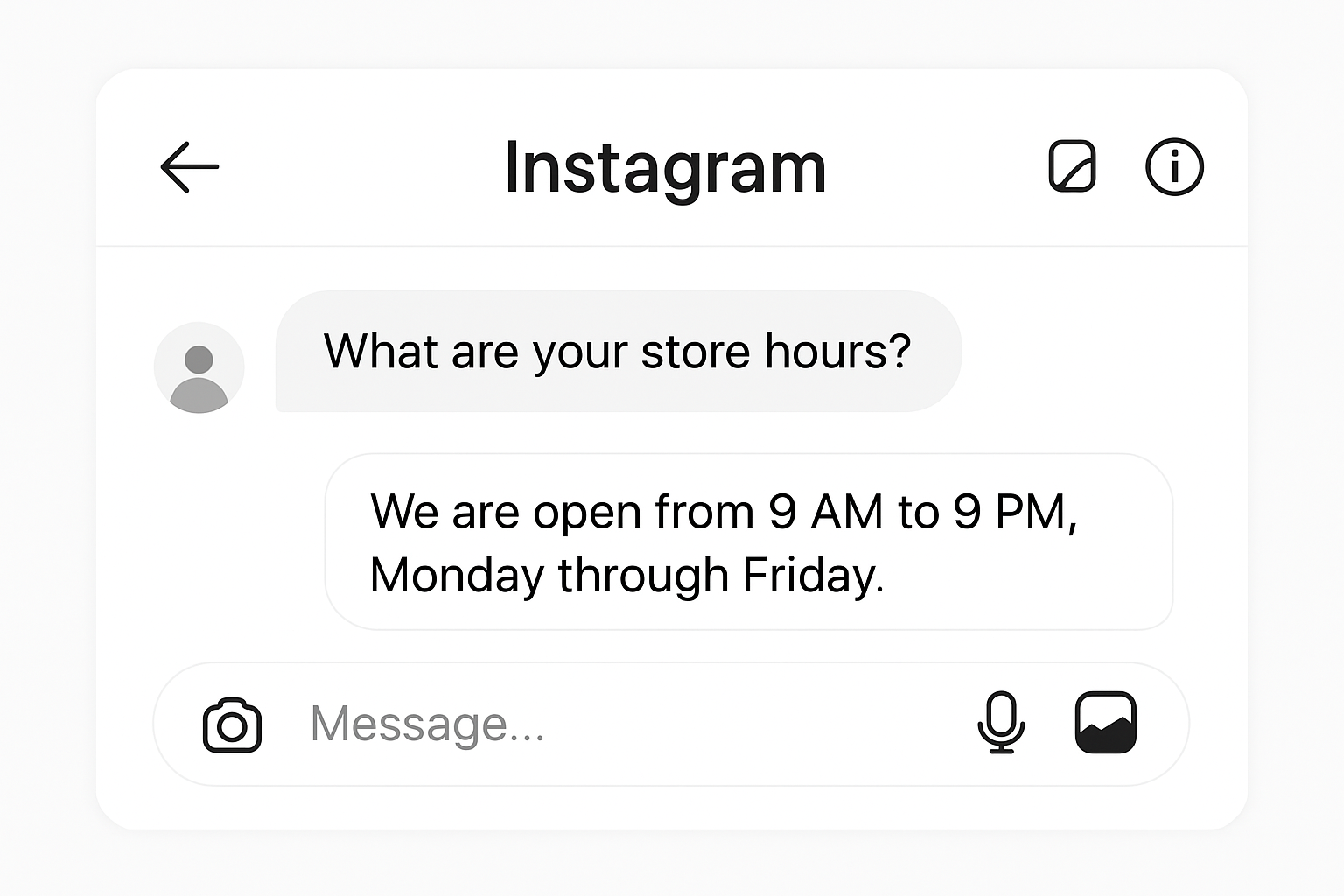3 Simple Steps To Streamline Your Business Order Process with EDI
- 1 How does EDI help the Retail Industry?
- 2 How does EDI in Retail Management Work?
- 2.1 EDI offers –
- 2.1.1 Speed –
- 2.1.2 Lowered Expense –
- 2.1.3 Greater Accuracy –
- 2.1.4 Increased Efficiency –
- 2.1.5 Better Business –
- 3 EDI Documents Used In the Retail Industry
- 4 Key EDI Document Standards Used Within The Retail Industry
- 5 Ways To Optimize Order Fulfillment
- 5.1 Integration of systems and Re-assessment of Processes
- 5.2 Automating Inventory Communications
- 5.3 Aligning the Process To Reduce Friction
- 6 In a Nutshell
The retail industry is the busiest, with the to-and-from of product demand and supply. Dealing with multiple requests by customers and trading partners, the retail sector has to process and transact a heap of data and information. It is simply not easy to channel every piece of data distributed from shopping malls to stakeholders and others.
As retail businesses grow, retailers are adopting modern and technologically advanced solutions to streamline their operations and meet customers’ and traders’ expectations.
Regardless of the methods, infrastructure, and wages needed to complete the task, the time invested may magnify the cost.
How does EDI help the Retail Industry?
Instead of spending hours creating and receiving orders, the retail industry can equip itself with EDI solutions. EDI helps in a quick and easy transaction of data like invoices, payment details, shipping details, and more. Retail EDI is the process and methodology for retailers to have seamless communication, replacing manual processes and eliminating manual processes.
How does EDI in Retail Management Work?
Retailers and traders who collaborate are connected through an internal server to communicate vital information electronically. Hence, any data, such as a purchase order, is automatically sent to the vendor’s EDI system, generating a label for every pallet. EDI also sends the shipment information and details to the retailer attached to an invoice; hence, there is no minimum human intervention needed to complete the transaction.
EDI offers –
Speed –
Retailers can reduce their time for every order by eliminating complex steps and hours needed to complete those steps.
Lowered Expense –
Retailers can minimize their costs as EDI can reduce the wear and tear of the printing and faxing machines as no paper-based documents are needed to store and file a document.
Greater Accuracy –
EDI deters errors caused by manual entry of information. When an order is placed via EDI, part numbers and related item information are directly integrated into the system. With EDI, your staff will not struggle with shipments, as the system can reduce the possibility of missing, transposed numbers or letters or other errors.
Increased Efficiency –
When employees spend less time creating orders or manually entering data, they focus more on higher-value tasks, improving customer service. EDI eliminates lengthy processes, resulting in fewer out-of-stock situations, cancelled orders, improved cash flow, and faster merchandise turnover.
Better Business –
When you have accurate and error-free data, you tend to make informed decisions. Retail EDI makes retailers agile and better at responding to customer needs, changing the market while opening doors to new opportunities.
EDI Documents Used In the Retail Industry
| Message Types | Description | ANSI X12 | EDIFACT |
| Purchase Order | Transmission of data from buyer to supplier to order goods/services | 850 | ORDERS |
| Purchase Order Response | Transmission of data from the supplier to the buyer to comprehend the amount of order to be fulfilled and any discrepancies from the original order | 855 | ORDRSP |
| Invoice | Transmission of data from the buyer to the supplier for payment of the goods/services | 810 | INVOICE |
| Despatch Advice | Transmission of data from the supplier to the buyer to display the status of the goods shipped | 856 | DESADV |
| Remittance Advice | Transmission of data from the buyer to the supplier for confirming payment | 820 | REMADV |
| Product Catalog | Transmission of data from the supplier to the buyer with up-to-date product and cost information | 832 | PRICE |
| Functional Acknowledgement | An automated response is sent from a receiver with an EDI message to confirm receipt of the message | 997 | CONTROL |
Key EDI Document Standards Used Within The Retail Industry

There are a few EDI document standards used within the retail industry.
TRADACOMS
One of the early EDI standards that was heavily adopted is Tradacoms. The standard is now famously known as an EDIFACT EANCOM. Yet multiple companies in the retail industry are unaware of the change and continue to use TRADACOMS.
VICS
Voluntary inter-industry Commerce Solutions were created to increase the efficiency and effectiveness of the retail supply chain. VICS pioneered the implementation of the “quick response” standard to simplify product flow information for suppliers and retailers. VICS is now a part of GS1 US, which handles planning, forecasting, collaboration, and replenishment.
ICOM
This standard addresses common standards in the supply chain. ICOM consists of a group of standards widely used in the retail industry. However, new and improved XML eCOM standards are emerging to streamline the EDI processes.
Automated electronic data interchange and analytics can help companies make new improvements and even create new fulfilment channels to satisfy customers.
EDI is used for streamlining the processes, such as order retrieval & fulfilment, and more. Additionally, it also aids in identifying the methods customers use most and ways to remove any bottlenecks that cause problems. You might also add another fulfilment channel to keep customers’ content.
Let’s discuss how EDI can help streamline the order fulfilment channels.
Ways To Optimize Order Fulfillment
Any business order process is fulfilled when you can assess and analyze the order fulfilment model, including dropshipping, in-house shipping, outsourced 3PLs, buying and picking online/in-store, in-store fulfilment, and third-party marketplaces.
Moreover, you might want to ask these questions to streamline the order fulfilment, like which retailer is seeing the most significant sales, damaged shipment rates, is an out-of-stock problem, and what time does it take to fulfil & ship an order?
Integration of systems and Re-assessment of Processes
The order fulfilment process can easily be integrated with managed EDI services. EDI systems can be integrated with different software systems, like ordering & e-commerce, warehouse management, inventory management, and accounting, to simplify the processing.
After integrating all systems with EDI, you will be able to read the same data, reassess, and see if you get a common outcome. Focusing on finding and improving the bottlenecks can help you eliminate potential problems. With EDI, companies can eliminate manual processes and the ordering process.
Automating Inventory Communications
By setting automatic inventory inquiries, companies stay updated through alerts that keep them posted on the inventory threshold of the products. Inventory records can also be automated and set to reach a predetermined level.
Combining the sales information from all order fulfilment channels can prevent overselling or overcommitting products. Using EDI can help keep track of the total inventory in one place, streamlining the order fulfilment process.
Aligning the Process To Reduce Friction
Look for a scenario where you have to deliver an order. You will have to carefully package the order for transportation; hence, you will evaluate the right side of the box. Along with receiving orders and dispatching, a retailer must manage returned orders.
Handling product returns is a headache, yet retailers must deal with the inevitable. Retailers who do not focus on easy returns for their customers can lose them. More than returns, losing a lifelong, loyal customer will never help the scalability of the business.
Making necessary changes and then measuring the changes, including daily sales & returns, complaints on returns, and more, can help you compare the stats with industry expectations. If you can meet the benchmark, it’s time to identify operational & cost efficiencies.
In a Nutshell
Integrating EDI professional services can significantly impact the retail industry. The elongated and manual order fulfilment process can be shortened and accelerated seamlessly. With EDI, you get more visibility, improve your processes, reduce risk, eliminate errors, reduce complexity, and assess and control functions within your business.
You can cost-effectively grow your business and open doors to new opportunities while staying competitive in the market and meeting customer needs while utilizing resources mindfully. Data Interchange can ensure that the company is prepared with practical and flexible order processing that gives an edge over the competitors. If you are looking for a fresh approach to EDI, contact a reliable and professional EDI services provider today to ensure increased efficiency and optimized scalability.

















